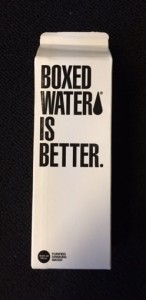— August 23, 2019
Managing a multi-generational workforce can be hard. What’s the best way to support generational needs to attract, retain, and engage employees.
Today’s labor market is the most diverse ever, with companies hiring more hourly workers than ever before. Add to the mix that Millennials are now the dominant generation – surpassing Traditionalists, Baby Boomers, GenX, and GenZ in their numbers – and the challenges inherent in managing a multi-generational workforce cannot be ignored. Too often, the perspective and work habits of younger workers are cast aside and undervalued, precisely at a time when leading organizations could learn from the vitality and enthusiasm Millennials and GenZ workers bring. At the same time, recognition of generational diversity, and the desire to value all contributions are changing how organizations view workplace management. HR leaders face the daunting task of hiring, retaining, engaging, and managing today’s complex, multi-generational workforce. One of the biggest shifts Millennial and GenZ workers are bringing with them is the rising trend of hourly, multi-job lifestyles, which has more and more companies taking on hourly employees, compared to traditional salaried workers – a trend that makes the diversity of our multi-generational workforce even more apparent.
Mind the (Generation) Gap
To better manage the generational divide in today’s workforce, it is necessary to understand the different generations, their attitudes surrounding work, and what their individual needs are within the workplace. While each of these generations brings different perspectives and contributions, all are vital to today’s workforce:
- Traditionalists: While this generation is currently phasing out of the workforce, they still represent a division of employees that need to be catered to. Traditionalists are generally focused on a single job, and they have climbed the ranks in both their title and earning potential. They are known for their loyalty to employers, with many working for the same company decade after decade. However, Traditionalists tend to be less excited by digitization. Their primary working years were spent pre-internet. They’ve lived in a world of paper records, time-cards, and physical paychecks – and many say they’d be happy if that never changed.
- Baby Boomers: Most Boomers have reached their title and earning potential by now. Research shows that this generation is staying in the workforce longer to support family financial needs, but, in many cases, they are looking toward retirement. Like Traditionalists, Boomers are also known for their loyalty and are motivated by internal advancement opportunities. As they near the end of their careers, many are looking for flexible 401K initiatives and rewards-based benefits like sabbaticals that recognize their commitment, hard work, and loyalty.
- Generation X: GenX brought work/life balance into the career equation. Due to the goal-oriented, motivated mentality of Boomers before them, many GenXers were exposed to the career burnout their parents experienced. Yet, perhaps more than any previous generation, GenXers thrive on financial and personal independence. They value flexibility in their schedules and career. They were also the first generation to put an emphasis on career development and mentorship in the workplace.
- Millennials: Millennials are the fastest-growing segment in the workforce. Taking stock from GenX, Millennials are flexibility-seekers. They spent the early part of their careers in offices that were figuring out how to get and stay connected with email and mobile phones. Most used paper-driven processes, but have now adapted to, adopted, and prefer all things digital. In contrast to Traditionalists and Boomers, Millennials are motivated by more than just a weekly paycheck. In addition to monetary incentives, Millennials value a company culture with a focus on skills development, training, and collaboration. Flexibility in scheduling and time-off policies that allow for work/life balance is a must. Millennials have also been credited with jump-starting what we now call the Gig Economy. They are actively seeking hourly, contract positions that better fit their lifestyles and, in many cases, operate outside the typical 9–to–5 hours of salaried jobs. Millennials also have no qualms about leaving a company or career, if their needs are not met. While Traditionalists and Boomers staked their careers on loyalty, Millennials often jump from one organization to another, seeking the best fit for them.
- Generation Z: GenZ is just now kickstarting their careers. Building on the flexible foundation Millennials have cultivated, GenZers are working more jobs and more hours, with many taking up more than one gig at a time. It’s the GenZ population that’s driving same-day-pay options, a concept that allows them even more freedom to float from gig to gig, exploring new possibilities and developing their skillsets, without sacrificing financial freedom.
What do we take away from all of this?
First, for Traditionalists, Boomers, and – to some extent – GenX employees, their job is a paycheck. A means to an end. For younger employees, their focus has shifted to having a career – not only to pay the bills but also to provide a deep sense of fulfillment. Development, continuing education, and training all play a big part in what careers and organizations Millennials and Generation Z employees seek out.
Second, the tech-savvy Millennials and GenZers of today have probably never seen a timecard or filled out a paper timesheet in their lifetime. Unlike older generations, which like the feeling of having a physical check handed to them every week or two, younger employees value digital and mobile solutions that allow them to easily track hours and allow for direct deposits right to their bank accounts. Millennials and Generation Z employees grew up on the internet, and companies need to cater to the digital mentality in order to help attract and retain younger employees. This is especially critical because these two generations, more than any other, represent the future leaders of our organizations.
Lastly, and arguably the biggest differentiator, is that older generations had one job and one job only. They worked structured, salaried, 9–to–5 positions with set time off, and little focus on work-life balance. Younger generations are tipping the labor market toward hourly contract employment as the Gig Economy takes hold. Millennials and GenZers are breaking the mold of salaried employment and seeking out roles that allow for flexibility, unlike their counterparts that strived for consistency within their careers.
Keeping everyone happy
How can organizations tackle the management of a diverse and continuously evolving workforce?
By giving them what they want. Companies that offer creative solutions that suit the different logistical needs of their diversified employee roster will see the greatest gains. Success will require companies to strike a balance between the needs of the business and those of its evolving workforce. Waiting it out or looking the other way is not an option.
As the influx of younger generations continues, improved transparency and better tools for automated scheduling and hour management will be crucial. With the growth in – and changing perceptions around – hourly workers, companies face more pressure than ever to find solutions that help them win and retain this new type of talent. Having a connected workforce, where technology enables employees at every level to operate at peak efficiency, will assist companies in meeting these needs, in turn driving business success. For many Millennial and GenZ employees, being exhausted from work becomes their baseline. The daily, confined work grind is not meant for all. Providing these valuable contributors with the right technology – with the ability to schedule work during traditional ‘off-hours’ or update their shift preferences on the fly to better accommodate work-life balance – will improve overall work quality, productivity, and employee engagement.
As noted above, Millennials and GenZers are big on corporate culture and mentoring. They strive for excellence, and that includes receiving feedback whenever they can. When armed with the right solutions for optimizing time and schedules, managers and supervisors can spend more time on development. By having automated processes in place, they have the time to actually manage – to take the time to sit down with their employees and provide training and feedback instead of wasting time on manual tasks.
For most, the key to managing a multigenerational workforce will be flexibility, both in company culture and technology solutions. The rising group of Millennials and GenZers are looking for flexibility and ditching the notion of traditional 9–to–5 business hours. Flexible workforce management solutions that boost productivity, provide insights, drive engagement, and simplify compliance across all employee types will be a driver for keeping workforces under control.
Business & Finance Articles on Business 2 Community
(62)
Report Post





